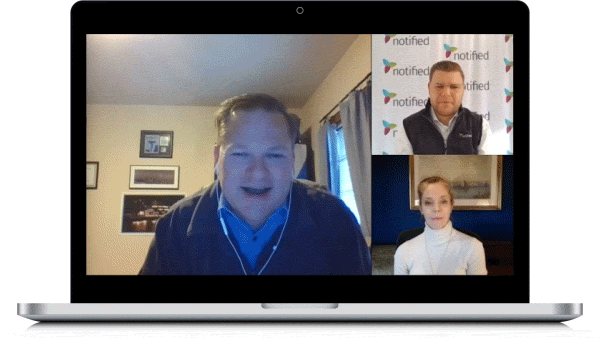The demand for companies to provide transparent and timely stakeholder information is unprecedented and driven in part by digital technology, a global pandemic and increased focus on corporate purpose.
This has led to the question: Which strategies should IR teams prioritize in 2022 to deliver engaging stakeholder communications while generating long-term value?
To help you prepare for the new year, investor relations leaders from Notified, Nasdaq and Atotech recently hosted a webinar to discuss the impact of technology on how to create scalable and accessible stakeholder relations.
Read on to learn the main takeaways from our webinar and how important the role of hybrid events and measuring ESG efforts will be in 2022.
How Has Technology Impacted Stakeholder Engagement?
In the past year, there has been a digital transformation that has accelerated communications technology development.
These advancements have provided professionals with scalable and efficient tools to engage with stakeholders. It’s critical to identify the right thing, for the right audience, at the right time. Identifying these touchpoints allows you to be strategic and proactive in your engagement and communications.
Globally, organizations have implemented adjustments when it comes to the personalization of delivering content and hosting events.
An example of an event that features these adjustments would be an IPO roadshow, one of the first points of investor engagement. The virtual and hybrid event formats have allowed organizations to create immersive experiences for investors across time and space. These environments have created an opportunity to be proactive in meeting and interacting with stakeholders using a content-driven strategy.

How Has Investor Relations Evolved?
The IR space has evolved from an industry that was concentrated on shareholders to one that drives stakeholder engagement. It has become necessary to widen the lens and think beyond institutional investors. This growing trend has focused efforts on stakeholders like future or current employees, investors and even other industry forces.
Our panel attributed the blurring or disappearance of lines around stakeholder groups as a leading cause for this evolution. A commonality between these groups is that they are much more active in sustainability and ESG topics. As an industry, we can no longer think of these groups in silos and instead need to think of them as one.
It’s crucial to have consistency in your communications when engaging with stakeholders. You have to be cognizant and ensure that your message will resonate with your audience, including those evaluating your company.
How Can You Leverage Reporting to Surface ESG Insights?
Every company is at a different stage of ESG communications, whether they are just starting or need to rethink their approach. Reporting allows organizations to create benchmarks to measure and monitor their efforts.
For example, as sustainability is a universal concept that empowers an organization, it is necessary to have the ability to disclose data surrounding your strategy, targets and outcomes.
Many opportunities surround the reporting of ESG efforts, including the standardization of reporting that is underway. When it comes to ESG, the measured elements involve a risk that can impact your evaluation or company as a whole.
Once reporting is standardized, things will become much easier for companies, investors and stakeholders, especially when surfacing insights to determine opportunities.
Watch Our On-Demand Webinar
Thank you for reading this recap! To view the entire discussion and learn more about stakeholder engagement from hybrid events to ESG, watch the full broadcast on demand.
